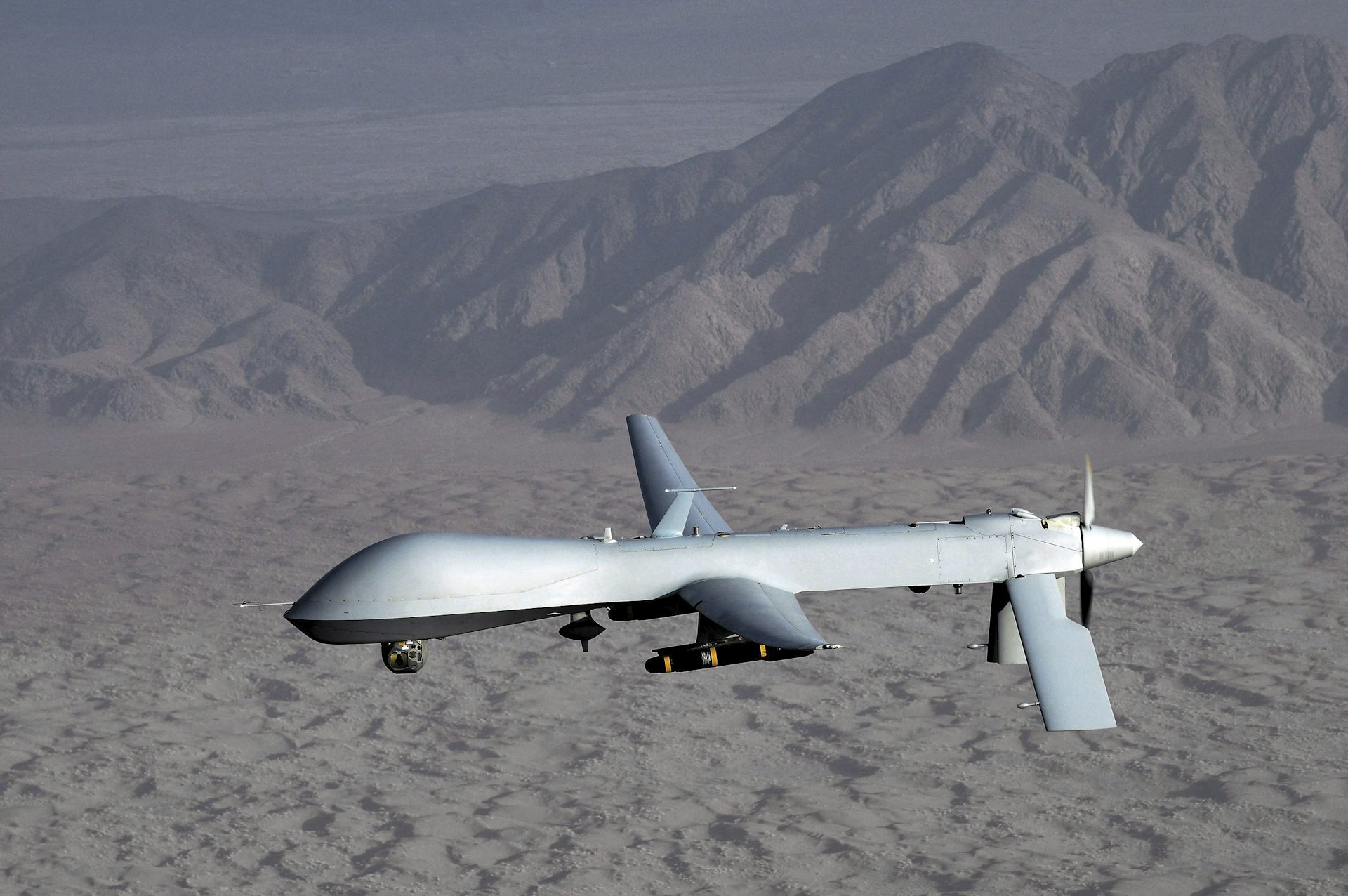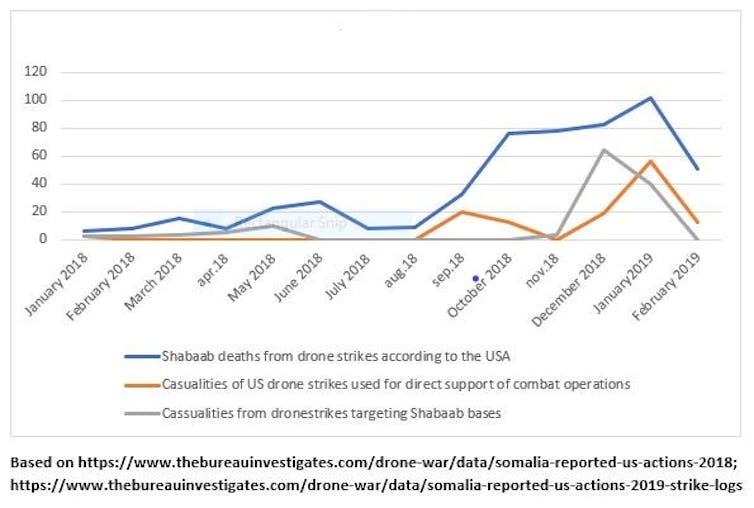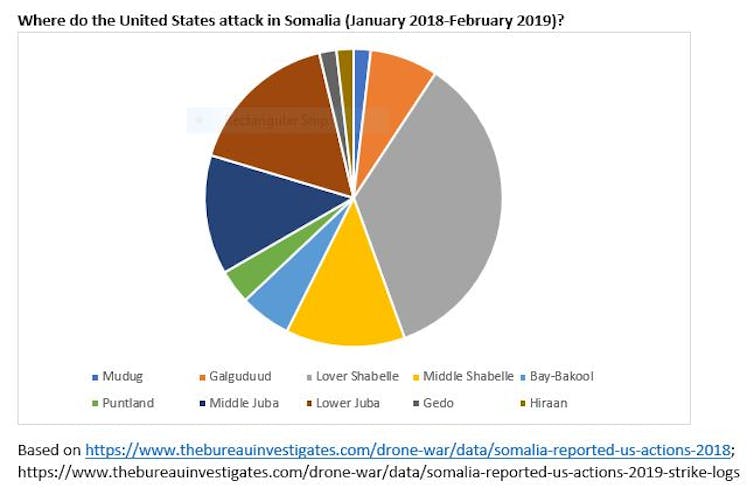
In recent years, drones have emerged as the United States’ weapon of choice. They enable the US to intervene in conflicts without putting its soldiers in harm’s way, and seemingly offer an alternative to costly interventions – as in Afghanistan and Iraq.
Armed drones have performed remarkably well in US counter-terrorism strategy in Pakistan and Yemen. There, they’ve killed leaders and driven out terror groups.
But the case of Somalia illustrates that there are limitations to this strategy. Intensified drone strikes in Somalia have not created anything close to a strategic victory against the terror group al-Shabaab. The US military has admitted as much.
There are examples of lower level victories, such as the drone strike on 1 September 2014 that killed Shabaab leader Ahmed Godane. But none of this kind of targeting has proved capable of seriously crippling al-Shabaab.
There are pros and cons to the use of drones. But the underlying problem is that casualties alone cannot defeat a terrorist group like al-Shabaab. In all, drone strikes in Somalia are not a game changer. They are a tool to manage the threat of al-Shabaab, but there’s no way they’ll defeat the group entirely.
The changing face of drone warfare
Drone strikes inside Somalia have a long history. As early as January 2007, a predator drone was used to track Al Qaeda operative Abu Taha Al Sudani’s convoy, which was then attacked by a US gunship. However, until June 2011, drones were not used as a separate attack medium. The US preferred to rely on a combination of cruise missiles, gunships and attack helicopters.
The increase in US bases with launch capacity in the vicinity in Djibouti, Ethiopia, Kenya and within Somalia, has, in the past eight years or so, made it easier for the US to launch drones in Somalia.
In March 2017, US President Donald Trump intensified the use of drones by designating parts of Somalia an “area of active hostilities.” This gave lower level commanders the power to designate targets and approve drone strikes. By September, the Trump administration dismantled several Barack Obama–era restrictions, granting more freedom to local commanders to order drone strikes.

Different uses of drones
Today there are numerous types of drone strikes.
Some of these target al-Shabaab bases. In 2018, bases in Somalia’s Lower Shabelle area were repeatedly attacked by US drones. These attacks left more than 80 al-Shabaab militants dead in the space of about six weeks.
A second type of attack uses drones as tactical support. Here, drones are used to back friendly ground force in their offensive and defensive operations. Support for ground forces often includes US special forces. The Somali army is now supported by such attacks.
A third type of attack is the VIP killing mission, which targets senior al-Shabaab leaders. Only three of these were launched in 2018 – and all failed. Such operations often depend on inside intelligence from spies on the ground close to the targeted leaders.
Random targets of opportunity, for example an al-Shabaab patrol spotted by drones or friendly forces, constitute the fourth category of drone strikes. Such attacks are launched on short notice, and usually have few casualties.
Drone warfare and recruitment
In Somalia, there are many factors that keep al-Shabaab going. Among these are clan allegiances, the lack of local protection against forced recruitment, and poverty. In one study, for instance, a majority of 39% of al-Shabaab recruits cited economic reasons as what finally “pushed” them to join the group.
These ensure that al-Shabaab can fill up the ranks with fresh recruits after drone attacks, especially if friendly ground forces cannot be deployed to take advantage of the situation. The troubled Somali army often lacks the capacity to move in and sweep up after a drone attack, which would do more to hamper al-Shabaab’s activities in the long run.

VIP killing missions also seem to have been of limited effect, perhaps because of limited US intelligence in the region. The killing of al-Shabaab leader’s in 2014 did not lead to the predicted fragmentation and internal conflict.
Drone strikes also kill ordinary people who aren’t affiliated with any terror groups. These deaths are seldom highlighted by the US military – but they’re often reported in Somali media, which leads to some animosity from civilians who fear they will be accidentally targeted.
Boots on the ground
What’s needed is local protection for ordinary Somalis: both to prevent the group from recruiting more members and to guard them against al-Shabaab’s attacks. This will require boots on the ground which Somalia’s own army is best placed to do in the long run.
Stig Jarle Hansen is the author of the forthcoming book, Horn, Sahel and Rift:
Fault-lines of the African Jihad![]()
Stig Jarle Hansen, Associate Professor of International Relations, Norwegian University of Life Sciences
This article is republished from The Conversation under a Creative Commons license.

